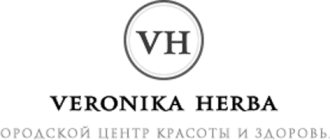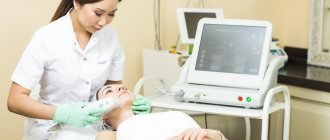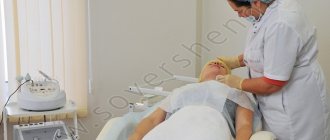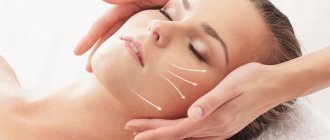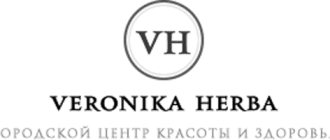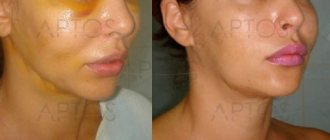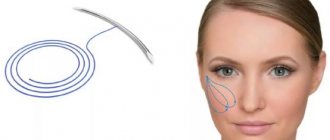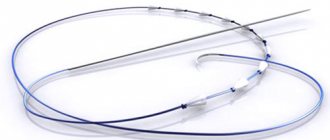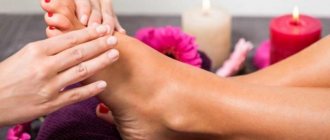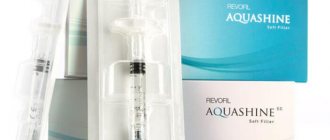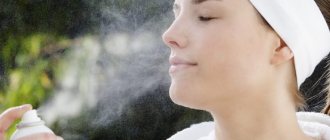Types of threads
Different types of threads can be used for a facelift:
- Linear. The simplest and most inexpensive. Used for a full facelift, eliminating a double chin and improving the condition of the neck skin.
- Spiral. Used for vector facial rejuvenation procedures. Used to lift sagging eyebrows, smooth out nasolabial folds, and solve the problems of facial wrinkles.
- Needle-shaped. Universal types of threads that can be used to tighten the skin of any part of the face. Ideal for patients over 40 years of age. Their effect lasts longer than when using other mesothreads.
- Triple braids. Provide stable and long-lasting results. Can be used to tighten the face, abdomen, chest and buttocks.
The choice of the optimal type of thread for lifting depends on the desired effect, area and condition of the skin.
How mesothreads were invented
The idea of stitching fabrics with mesothreads to create a frame arose in the 70s of the last century. Gravitational ptosis - drooping of facial and body tissues under the influence of the natural force of gravity - was proposed to be corrected by sewing the finest threads of gold or platinum with a cross-section of 0.1 mm into the skin by French specialists. During the procedure, special needles with threads threaded through them were used. They were used to stitch the skin, forming a frame for soft tissues, preventing them from sagging. The procedure was quite expensive, so it was available only to a select few. Fans of gold threads were famous actors and actresses, for example, Catherine Deneuve, into whose beautiful aristocratic face more than 8 meters of gold threads were inserted.
Threads made from precious metals have been replaced by more affordable materials that have the same properties, while being safe, versatile and high-tech.
How the procedure goes:
- Consultation with a cosmetologist: determination of skin type, degree of age-related changes, correction scheme;
- The doctor applies a special marking on the skin with a cosmetic marker along which the threads will be inserted. Anesthesia is applied to the skin (Ultracaine cream/injection);
- The doctor tells the patient the key points of the procedure;
- The doctor makes a small puncture where the threads are inserted. The threads are inserted under the skin using a very thin needle - a cannula, along pre-designated lines.
- The doctor gives the necessary recommendations after the procedure.
Usually the procedure takes no more than 30 minutes (depending on the affected area). Immediately after the procedure, there may be slight swelling, bruising, and redness in the area where the threads were inserted, which will go away on their own within 7-10 days.
The threads form a kind of collagen framework under the skin, which keeps tissues from further sagging, and also stimulate the production of collagen and elastin, which are responsible for our beauty and youth. Therefore, after the procedure:
- The skin becomes noticeably thicker;
- Wrinkles are smoothed out;
- You get a visible lifting effect;
- The relief is evened out and the structure of the skin improves.
Face lift threads. Features of their use
Non-absorbable threads for lifting - suitable for correcting pronounced sagging skin and eliminating age-related defects. Previously, for reinforcement purposes, wires made of inert precious metals that were not rejected by the body were widely used: gold and platinum of the highest standard. The once popular gold thread reinforcement technology has given way to newer developments. Now cosmetologists prefer innovative polymer bases in face lift threads. The key substance in their composition is polypropylene, a material with pronounced strength and wear resistance; Teflon is less commonly used. Such non-degradable polypropylene or Teflon threads guarantee visible tightening for up to 5 years: lying deep enough, they effectively tighten and hold the surface and middle layers of tissue.
Most often, non-absorbable foundations are recommended for patients with obvious age-related changes who have not exceeded the age of 50. It should be taken into account that the introduction of such threads imposes restrictions on the use of a number of hardware cosmetology techniques in the future.
Get an online consultation
right now.
Get
Aptos threads are common . At the moment, the Aptos thread is recognized as the most effective in the world of cosmetology. Thanks to the thickness and shape of the threads, the Aptos facelift is able to reliably lift and fix the subcutaneous layers and combat ptosis (sagging of soft tissues due to weakened muscle function). The Aptos line has a wide selection of fibers in composition and texture (kogi - notched, and spiral cut) depending on the area that needs to be corrected.
Aptos threads for face lifting are non-absorbable - these are polypropylene aptos threads, and absorbable - biodegradable aptos threads made of caprolactone, which promotes enhanced collagen production.
, Teflon Gore-Tex threads are similar to aptos (they also belong to the category of non-biodegradable threads), but they are not so widespread.
Self-absorbable lifting threads, subject to biodegradation, form a framework, stimulating the skin's natural support through the production of collagen or hyaluronic acid. They are not suitable for severe ptosis and are more suitable for middle-aged patients. The effect lasts up to 2-3 years. Self-absorbable threads are currently divided into categories based on their qualitative composition - caprolon/caprolactone, polydioxanone, polylactic acid.
Polydiaxonone ( mesothreads) for face lifting are largely recommended for the prevention of age-related changes and to combat the initial manifestations of aging; face lifting with mesothreads is recommended for patients under 35-40 years of age. The technology came from South Korea. The thinnest of all those used, mesothreads for the face are installed shallowly, at the level of the hypodermis, that is, directly in the skin. The effectiveness of mesothreads is primarily related to the effect on tissue structure: they additionally enrich the layers of facial skin with lactic acid, which can significantly increase collagen synthesis. The mesothread lifting procedure stimulates biological reactions in the skin, under the influence of which revitalization or tissue rejuvenation occurs.
Separately, sometimes as an alternative to traditional thread lifting, reinforcement with liquid safe threads (or biothreads) is considered. The mechanism of action is the same self-resorption of the base with the subsequent formation of a collagen framework of the face. Liquid threads for the face have a safe and natural composition close to the body tissues, “locked” in a gel-like structure.
This operation is distinguished by its technology: a composition of hyaluronic acid and zinc oxide is injected under the skin with a syringe with a very thin needle, which gradually hardens and forms a stable subcutaneous mesh frame, smoothing out wrinkles. Liquid threads are gradually eliminated from the body. Of course, they give the mildest effect in comparison with other methods, but they cannot correct pronounced problems caused by age. The result after injection under the skin lasts up to 3 years - innovative liquid threads for the face, even when removed, continue to “work”.
Polylactic threads are made of polylactic acid - this is a special fiber that promotes tissue regeneration and slows down aging by activating cellular renewal. Lactic acid is a natural substance, an unchanged and important participant in many biochemical processes in the body, which is produced almost every second as a result of the breakdown of sugars. Many experts recommend polylactic threads for the first tightening procedure and for slowing down skin aging after 30 years. It is also important that after the installation of the threads and the end of the rehabilitation period, it is possible to carry out any cosmetic and aesthetic procedures without restrictions.
In the category of polylactic acid-based products injected under the skin, we can highlight the increasingly popular Resorblift threads. The French developed the methodology for working with them; Then America, European and Asian countries, and Russia joined the use of these polylactic fibers - in our country these threads have been used for more than 6 years. After injection under the skin, the acid begins to gradually dissolve, stimulating the active production of natural collagen, the fibers of which gradually replace the threads and form a new frame. Such assistance in rejuvenation through the natural processes of regeneration of the body is as natural and reliable as possible.
Combined lifting threads are a hybrid of absorbable and non-absorbable. These cosmetic lifting fibers are based on polypropylene and polylactic acid. As a rule, these are conical threads that appeared 5 years ago and are already quite well known in the cosmetology services market.
Recovery after the procedure
After a facelift with threads, the puncture sites are isolated with a plaster for several days. During the recovery process, you should adhere to the following recommendations:
- do not touch your face with your hands;
- do not take hot baths or showers;
- sleep on your back;
- use a special product to care for puncture sites;
- do not wet puncture sites with water;
- Do not drink too hot drinks.
Also, for two weeks after the procedure, you should not visit swimming pools, baths and saunas, minimize physical activity and exposure to direct sunlight on the skin.
What are mesothreads made of?
Polydioxanone is used for production. This is a modern suture material used by surgeons around the world when suturing soft tissue. It dissolves within tissues within 180-210 days, does not cause allergic reactions, and is non-toxic. Polydioxanone has high tensile strength. When resorbed, it causes the formation of fibrinous connective tissue.
It is widely used in plastic surgery, gastroenterology, urology, gynecology, for applying skin and subcutaneous sutures.
Double mesothreads DOUBLE ARM.
This type of mesothread has two needles that are incredibly flexible. The double needle technique allows you to thread the thread along the desired contour using just one puncture. This also minimizes vascular damage. The procedure when using these threads is less traumatic, while maintaining aesthetic efficiency and amazing results from the procedure. Double Arm threads are used mainly in these areas:
- Nasolabial fold area
- Submandibular zone
- Oval of the face, line of the lower jaw
Consequences
After the procedure, natural healing processes are observed for a week. Swelling, hematomas, and painful sensitivity go away on their own if you follow the recommendations of the rehabilitation period.
In some cases, healing takes longer, which is influenced by the patient’s age, lifestyle, and skin condition.
Consequences of thread lifting:
- prolonged swelling, hematomas;
- allergic reactions in the form of pigmentation, rash;
- purulent-inflammatory processes;
- tissue necrosis;
- thread break;
- material displacement;
- facial asymmetry;
- pinching of the facial nerve.
Important point! Side effects can occur if the installation technique is violated, low-quality material is used, or the patient violates the rules of care.
What effect should you expect?
Mesothreads tighten tissues and hold them in the desired position immediately after implantation. The main result is achieved after 2-3 months, due to the growth of a collagen framework around the strings. It depends on the individual characteristics of the patient - how quickly the processes of tissue regeneration occur. If collagen synthesis is slow, the effect of the procedure will be minimal.
The result is also influenced by the qualifications of the cosmetologist and the degree of development of side effects and complications after the procedure.
Spiral mesothreads SCREW
SCREW mesothreads are also called spring mesothreads, as they have a twisted shape. The outer part of the mesothread wraps around the needle or cannula in a spiral. Regular screws have a smooth surface. Such mesothreads are used if it is necessary to achieve a strong lifting effect. The threads have shape memory, that is, when inserted into the tissue, the thread stretches and straightens, and under the skin it again forms a spiral, pulling the tissue in the desired direction. Spiral threads are mainly used in areas with increased facial expression and in areas with increased sagging skin.
Possible application:
- In the area of nasolabial folds
- Neckline area
- Skin correction on the forehead and eyebrows
- Double chin
For what procedures are mesothreads used?
Mesothreads are most widely used to improve the contours of the face and neck contours with age-related changes. However, it is also possible to introduce them to various parts of the body.
Various types of mesothreads are used for various types of face, neck, and body lifts. With their help, facial wrinkles are corrected in the nasolabial folds, in the corners of the eyes, and the skin on the front and sides of the neck is tightened. Indications for use are:
- “rings of age” on the neck;
- drooping of the outer edge of the eye and eyebrow;
- crow's feet;
- pronounced nasolabial folds;
- eyebrow wrinkles;
- double chin;
- oval face that has lost its clarity;
- wrinkles in the décolleté area;
- uneven skin texture after fat removal surgery;
- pronounced sagging skin on the buttocks, inner surface of the arms.
Patient reviews
There are mostly positive reviews about the procedure on the forums.
The user writes about the good results of a facelift and the elimination of a double chin, a gradual increasing effect.
The user writes about threads appearing when facial expressions change.
The review states that for thin threads, it is better to carry out biorevitalization before thread lifting.
The participant writes about the long recovery period and the lack of results.
Opinion of cosmetologists
On forums, cosmetologists share their experience in installing mesothreads.
The review describes how to get rid of severe ptosis; therapy includes the use of threads.
The participant writes that the implantation of mesothreads could not lead to dysfunction of the upper lip.
The user writes about the recovery features and pain of reinforcement with different types of materials.
Linear mesothreads MONO.
MONO mesothreads are the most common and versatile mesothreads with a smooth surface. They can be used on any area of the face or body, even on the sensitive, thin skin around the eyes. After installation of mono threads, a more comfortable rehabilitation period is observed. The main problems and age-related changes that help correct mono mesothreads in facial cosmetology:
- Upper eyelid tissue lift
- Smoothing wrinkles on the forehead
- Elimination of wrinkles around the eyes, rejuvenation of the area under the eyes
- Reinforcement of the contour of the face and cheeks, giving the necessary shape
- Creating a Beautiful, Defined Chin
- Formation of the correct symmetrical lip contour
- Treatment of the double chin area, correction of excess tissue
Operating principle of mesothreads
Thin polydioxanone threads are inserted using special needles made of high-quality surgical steel to a depth of 3-5 mm under the skin. With their help, the doctor creates a special frame that tightens tissues that have undergone age-related changes.
At first, the threads independently hold the tissue, and after a while the body’s natural protective reaction kicks in and begins to actively produce collagen. Fibroblasts move from a passive state to an active one, skin rejuvenation is stimulated. The threads gradually dissolve, and the connective tissue frame remains, maintaining the skin in a smoothed state.
Needle mesothreads with COG teeth.
COG mesothreads (kogi) have small teeth-notches along the entire length of the thread. This helps them to attach better to the tissues and not change the position of the thread after a while. They are securely fixed for an extended period of time. There are a variety of COG filament options available today. Their main difference is the frequency of the teeth and their location at a certain angle to each other. Accordingly, if there are a large number of teeth, as is the case in , , , 12D mesothreads, you can achieve a good effect on areas that have undergone severe age-related deformations.
Where can COG threads be used:
- Correction of facial oval, elimination of jowls
- Elimination of wrinkles in the corners of the mouth
- Correction and smoothing of wrinkles in the smile area
- On areas of the body: buttocks, abdomen, inner thighs, outer arms
Contraindications
Threadlifting is not carried out if there are such contraindications as:
- cancer and some other serious diseases;
- bleeding disorders;
- pronounced inflammatory processes;
- autoimmune diseases;
- predisposition to the formation of keloid scars.
In addition, the procedure cannot be performed during pregnancy and breastfeeding.
Attention! All aesthetic plastic surgeries and most cosmetic procedures are strictly contraindicated for pregnant and lactating women. We also do not perform surgical interventions on people whose weight exceeds 110 kg.
Overview of manufacturers and types of mesothreads
Lead Fine Lift springs are produced in South Korea and have a lifting vector to the puncture point. Available in sizes from 27G to 29G and lengths from 4 to 6 cm. Atraumatic implantation of threads is ensured thanks to high-tech needle sharpening. Used for eyebrow lifting, nasolabial triangle, oval correction. Product quality is confirmed by international quality certificates. Cost 1 piece. — 1200 rub.
Spiral Beaute Lift V Line are manufactured in Korea, needle sharpening is carried out in Japan. Thanks to this, it is possible to minimize the puncture area and shorten the recovery period. Prescribed for the elimination of jowls and double chins, correction of the forehead, and eye area. You can quickly see the result. They have a length of 3.8 and 6 cm, needle sizes are 26G, 27G, 29G. Price - about 800 rubles. for 1 piece
Tornado skrew consists of 2 twisted linear threads placed in a conductor needle. Recommended for rejuvenating areas with moving facial expressions, eliminating wrinkles in the nasolabial triangle, mouth area, and eyes. It is performed under local anesthesia and the material is polydoxanone. Price 1 piece about 300 rub.
